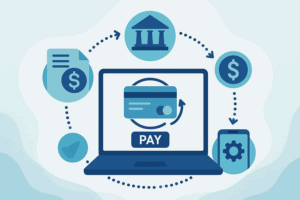
Let’s talk about something that tends to split the room. Debt. Some entrepreneurs treat it like a four-letter word, while others see it as the only way to grow fast enough to keep up. Whether you’re running a bakery out of your home kitchen or trying to scale a small but scrappy e-commerce brand, the big question often boils down to this: Can you really build something lasting without ever taking out a loan?
The short answer? Technically, yes. But that’s not the path most business owners are choosing anymore. And it’s not just out of desperation or bad planning. There’s a noticeable shift happening—more and more small business owners are leaning into smart borrowing as part of their growth strategy. They’re not racking up credit card debt on a whim. They’re making thoughtful, strategic decisions about when and how to borrow. Because sometimes, having a little financial breathing room can open a lot of doors.
Why “No Debt” Doesn’t Always Mean “Good Business”
For a long time, the idea of being debt-free was held up like the gold standard in business. The thinking went something like this: If you’re not borrowing, you’re in control. You don’t owe anyone anything. You sleep better at night. And sure, in a perfect world with unlimited cash flow and no sudden equipment breakdowns or supplier delays, maybe that’s true.
But in the real world? Growth costs money. Especially the kind of growth that actually moves the needle. You can run a one-person business out of your garage and be proud of it. But if you’re trying to take on new clients, open a second location, buy inventory in bulk to cut costs, or hire someone so you can stop wearing 17 hats, you’re going to need capital. Waiting until you’ve saved every dollar on your own can slow you down—or worse, let someone else beat you to the punch.
Debt isn’t automatically a bad thing. What matters is the purpose, the structure, and the timing. Business owners are starting to realize that borrowing doesn’t mean failing. It means betting on yourself in a bigger way.
The Rise Of Alternative Lending: Why Traditional Loans Aren’t Cutting It Anymore
Traditional bank loans used to be the go-to. Low interest rates, longer repayment terms, and the kind of stability that looked great on paper. But getting approved? That’s a whole different story. For smaller or newer businesses, especially those without years of tax returns or perfect credit, banks tend to be a dead end. The process is long, the paperwork is overwhelming, and the odds are rarely in your favor.
That’s where newer lending models come in. They’re built for speed, simplicity, and access. And one of the most popular options gaining real traction lately is revenue based business loans. They work differently than your standard fixed-payment loans. Instead of paying the same amount every month regardless of your income, your payments adjust based on how much you earn. Busy month?

You pay a little more. Slower season? Your payment shrinks to match. That kind of flexibility can be a game changer, especially for businesses with fluctuating sales cycles.
For a lot of owners, it’s the first funding option that actually makes sense with how their business works in real life. Not just on paper. It gives you the capital you need now, without putting you in a bind if your numbers dip one month.
Borrowing Can Actually Make You Smarter About Money
One thing people don’t talk about enough is how borrowing forces you to look at your business differently. When you’ve got payments coming out every week or month, you start to get laser-focused on where your money’s going and how it’s coming in. It’s like putting your cash flow under a magnifying glass, and while that can feel stressful, it can also lead to smarter decisions.
You begin to think about ROI in a new way. If you’re borrowing $30,000, it’s no longer about keeping the lights on—it’s about asking, how do I turn this into $60,000 or more? That shift in mindset matters. Borrowing, when done right, can sharpen your business instincts and help you grow not just in size, but in maturity.
And let’s be honest, not all entrepreneurs come into this with a background in finance. Most of us are learning as we go. Taking out a loan can be the thing that finally pushes you to really understand your margins, your burn rate, and how long it actually takes to turn a profit. In a weird way, it becomes its own form of financial education, one with real skin in the game.
Why Some Of The Fastest-Growing Businesses Don’t Wait To “Save Up”
There’s this narrative that if your business is “doing well,” you won’t need to borrow. But many of the fastest-growing businesses are actually borrowing while things are good—not when they’re desperate. Why? Because they understand momentum.

When customers are coming in, reviews are glowing, and your product is finally catching fire, that’s not the time to pull back and pinch pennies. That’s when you pour a little gas on the fire.
Let’s say you’ve got a product that’s moving fast and you know demand is there. But you don’t have the cash to order enough inventory to keep up. So you either sell out and make people wait (hello, lost revenue), or you borrow and stock up. The second option almost always wins, assuming your margins make sense.
The same goes for hiring. A lot of owners wait until they’re drowning before bringing on help. But borrowing to make that hire a little sooner—before the burnout sets in—can actually save the business. It gives you bandwidth to focus on the high-level stuff instead of burning all your energy just staying afloat.
The Emotional Side Of Borrowing: Fear, Pride, And Letting Go Of Control
Even when the math makes sense, borrowing still feels heavy for some people. There’s pride involved. Fear too. What if I can’t pay it back? What if I look like I don’t have my act together? Those feelings are normal, especially for first-time borrowers. But here’s the thing: fear shouldn’t be running your business.
Borrowing isn’t a sign you’ve failed. It’s often a sign you’re planning ahead. Most businesses don’t have steady, even cash flow every month. That’s the nature of the game. So borrowing becomes a tool—not a safety net, not a crutch, just a tool—to help manage the natural ebb and flow of running something bigger than yourself.
It’s okay to feel nervous. But if you’ve done the math, if you’ve talked to someone who knows the landscape, and if you have a plan for using the money wisely, don’t let fear hold you back. Growth almost always involves some risk. That doesn’t make it reckless. It makes it real.
On The Way Up
Debt doesn’t have to be the villain in your business story. It can be a stepping stone, a smart move, a calculated bet on yourself and the work you’ve put in. More and more small business owners are realizing that borrowing—done with eyes wide open—isn’t just about staying afloat. It’s about building something that lasts. And that’s not weakness. That’s strategy.















